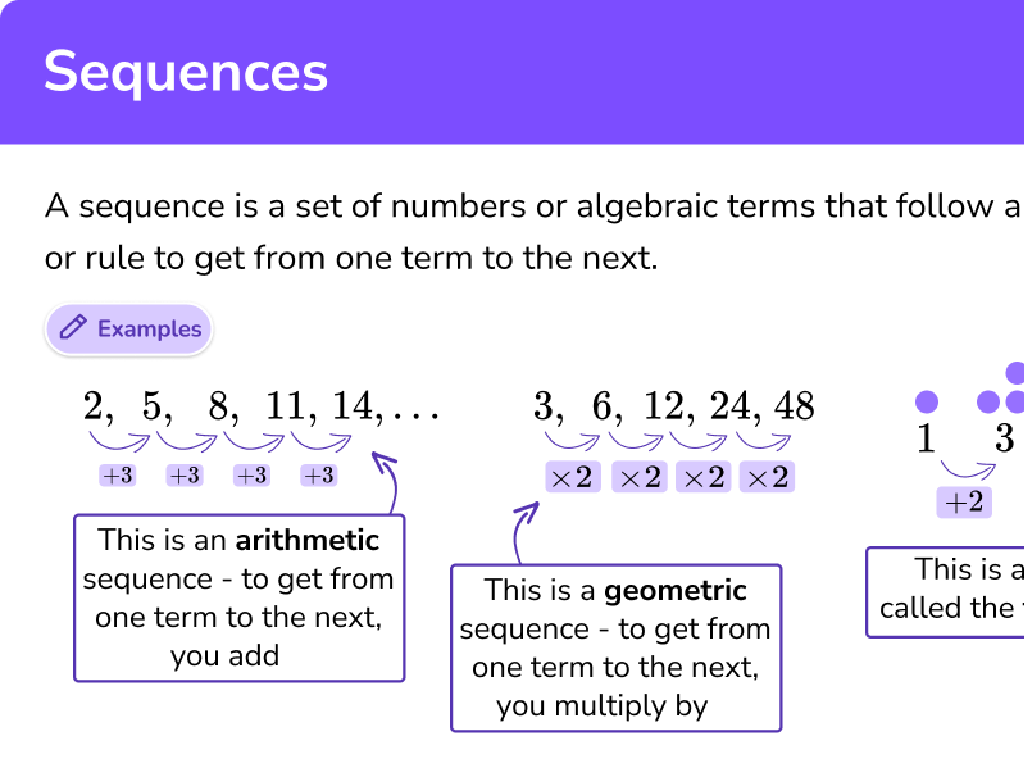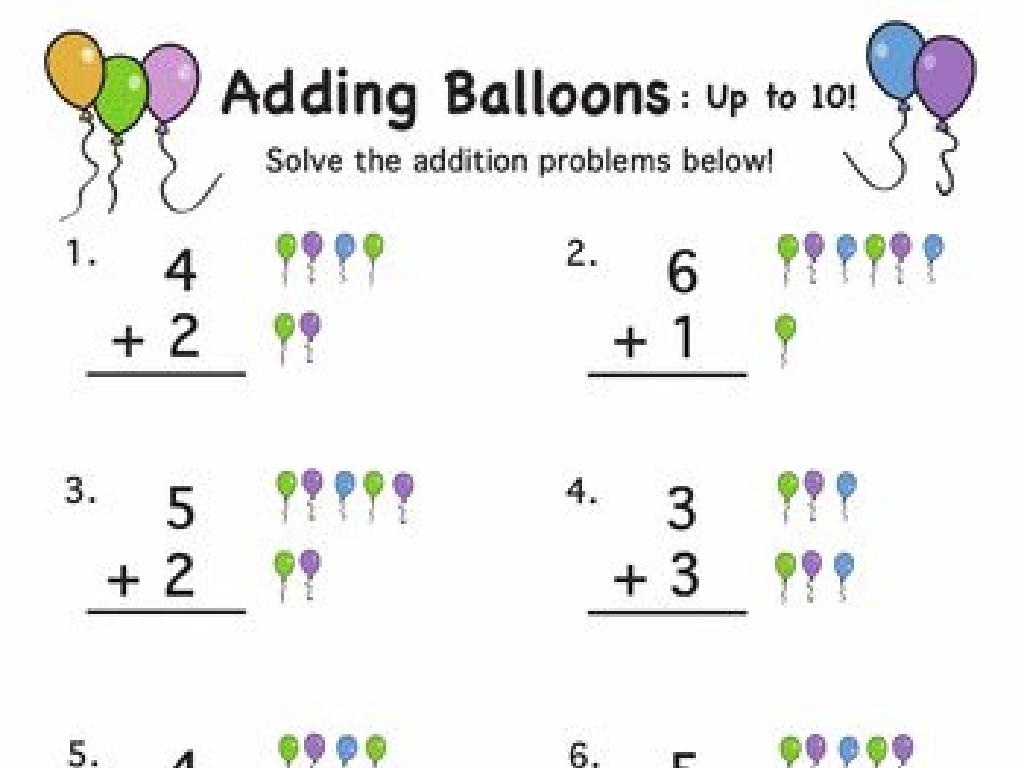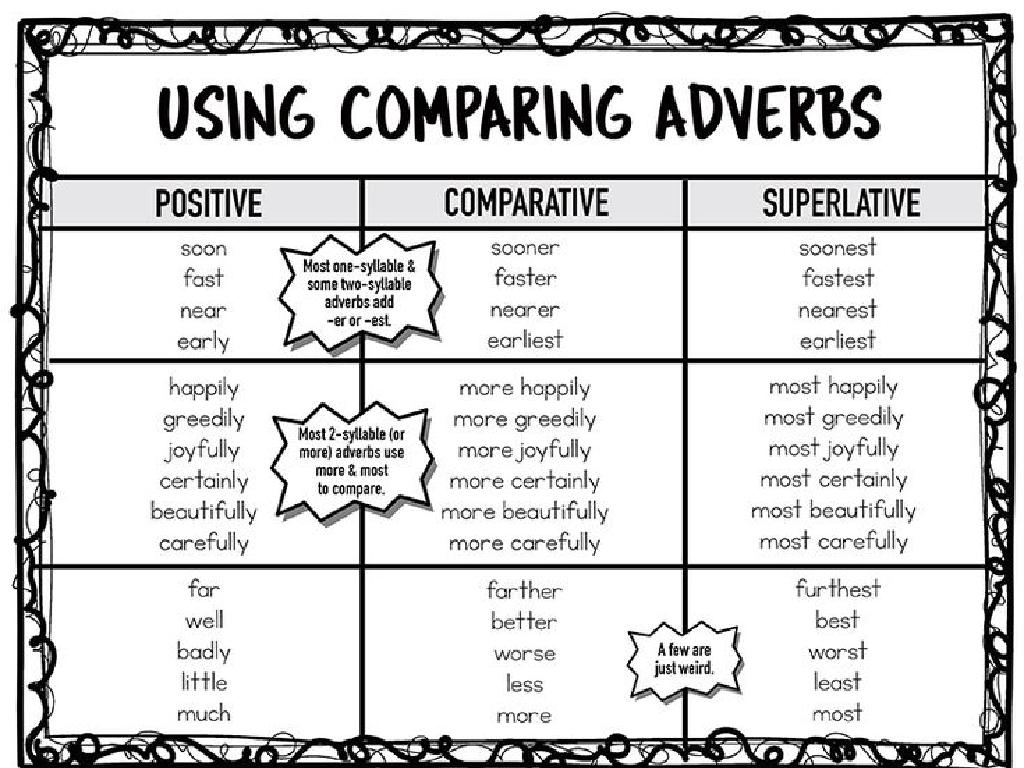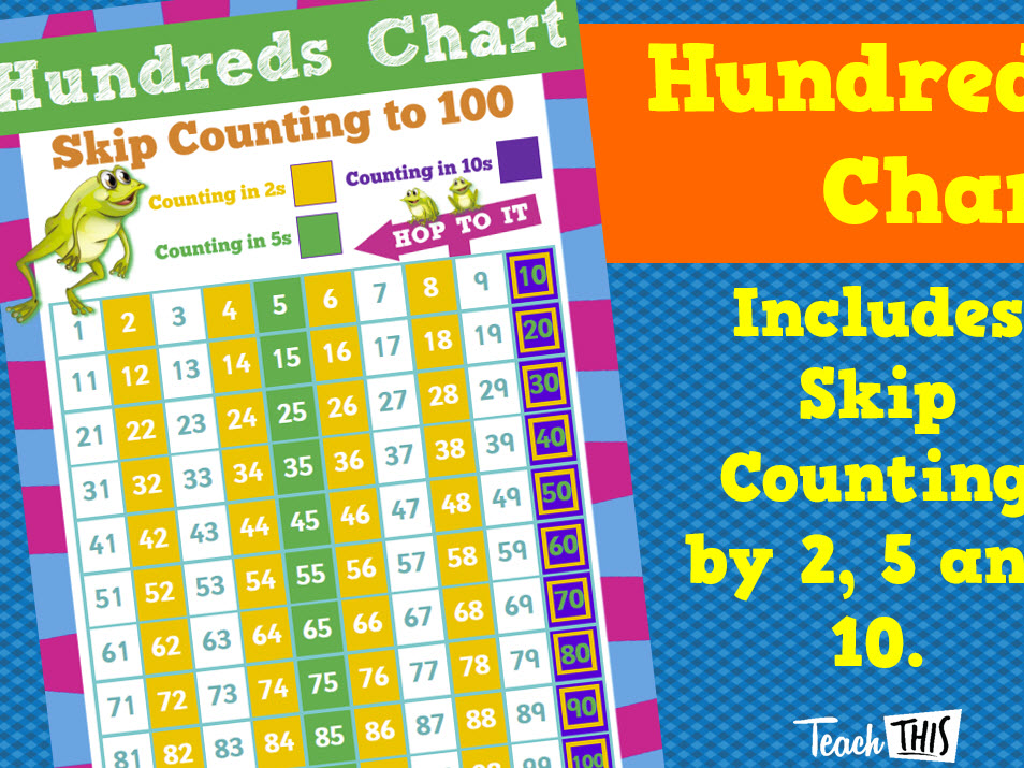Multiply Fractions By Whole Numbers Using Arrays
Subject: Math
Grade: Fifth grade
Topic: Understand Fraction Multiplication
Please LOG IN to download the presentation. Access is available to registered users only.
View More Content
Welcome to Fraction Multiplication!
– Multiplying fractions by whole numbers
– Combine fractions with whole numbers
– Arrays: A visual multiplication tool
– Arrays show repeated addition visually
– Today’s goal: Use arrays for fractions
– Understand the concept with arrays
– Practice with real examples
– Apply what we learn with examples
|
This slide introduces the concept of multiplying fractions by whole numbers using arrays, which is a part of understanding fraction multiplication. Arrays are a helpful visual tool that can make this concept more tangible for fifth graders. The goal for today’s lesson is for students to learn and apply this method. Start by explaining how multiplying a fraction by a whole number is like adding the fraction to itself multiple times. Then, demonstrate how to set up an array to represent this process visually. Provide real-world examples, such as dividing a pizza into fractions and then multiplying those fractions if more people join the meal. Encourage students to draw their own arrays and use them to solve multiplication problems involving fractions and whole numbers.
Understanding Fractions
– Fractions represent parts of a whole
– Everyday examples of fractions
– Pizza slices, a glass of water, or a chocolate bar divided
– Visualizing fractions with pictures
– Drawings of pies or bars split into equal parts
– Practice with simple fractions
– Use arrays to show 1/2, 1/3, 1/4, etc., as parts of a group
|
Begin the lesson by reviewing the concept of fractions as parts of a whole, ensuring students understand that a fraction represents a division of any object or quantity. Use relatable examples like slices of pizza or portions of a drink to illustrate fractions in a way that resonates with their daily experiences. Introduce visual aids, such as pie charts or bar models, to help students visualize fractions. Encourage them to draw these representations themselves. Finally, engage the class with hands-on practice using arrays to show simple fractions, reinforcing the visual aspect of fraction division and preparing them for the next step: multiplying fractions by whole numbers using arrays.
Multiplying Fractions Using Arrays
– Arrays organize objects
– Think of arrays as a neat grid with rows and columns
– Each spot equals one unit
– Rows and columns as factors
– Rows show one number we’re multiplying, columns show the other
– Arrays demonstrate multiplication
– Visualize fraction multiplication with parts of rows filled
|
This slide introduces the concept of arrays and how they can be used to visualize the multiplication of fractions by whole numbers. Arrays are a useful tool to organize objects into rows and columns, with each spot representing one unit. When using arrays to multiply, each row represents one factor (the number being multiplied), and the columns represent another. For multiplying fractions, part of a row may be filled to represent the fraction. This visual representation helps students grasp the concept of multiplying a whole number by a fraction. Encourage students to draw their own arrays with different fractions and whole numbers to practice this method.
Multiplying Fractions by Whole Numbers Using Arrays
– Recap: Multiplication with whole numbers
– Review how we multiply numbers like 2 x 3
– Visualize multiplication with arrays
– Arrays show multiplication as rows and columns
– Activity: Array for 3 x 4
– Draw 3 rows of 4 dots to represent 3 x 4
|
Begin with a brief review of multiplication as repeated addition, which students are familiar with. Explain how arrays can help us visualize this process by arranging objects into rows and columns. For the activity, instruct students to create an array for 3 x 4 by drawing three rows with four dots in each row. This will help them understand the concept of area as it relates to multiplication. After completing the activity, discuss how this visual representation can be applied to multiplying fractions by whole numbers, setting the stage for further learning.
Multiplying Fractions by Whole Numbers Using Arrays
– Fraction multiplication basics
– Multiplying by a fraction is like multiplying by a whole number, but you’re counting parts of the whole instead.
– Arrays show parts of a whole
– Visualize an array with rows and columns to represent the whole and parts.
– Example: 1/2 multiplied by 4
– If you have 1/2 and you need to multiply it by 4, imagine 4 arrays of 1/2. How many halves do you have in total?
|
This slide introduces the concept of multiplying fractions by whole numbers using arrays, which helps students visualize the process. Start by explaining that multiplying by a fraction is similar to multiplying by a whole number, but instead of counting whole numbers, we count parts of a whole. Use arrays to represent these parts, as they provide a clear visual representation of the concept. For example, show how multiplying 1/2 by 4 can be visualized by drawing 4 arrays, each representing 1/2. Ask students to count the total number of halves to find the product. This method reinforces the understanding of fractions as parts of a whole and how multiplication can be applied to these parts.
Multiplying Fractions with Arrays
– Draw array for whole number
– Arrays show multiplication visually
– Shade fraction of the array
– If multiplying by 1/3, shade 1/3 of each row
– Count shaded parts for product
– The total shaded is the answer
|
This slide introduces students to the concept of multiplying fractions by whole numbers using arrays. Start by explaining that an array is a visual representation of multiplication. Have students draw an array with as many rows as the whole number they are multiplying by and as many columns as they need. Next, instruct them to shade in the fraction of each row that represents the fraction they are multiplying by. Finally, have them count the number of shaded parts to find the product. This method helps students visualize the multiplication process and understand the concept of fractions more concretely. Encourage students to practice with different fractions and whole numbers to gain confidence in this method.
Multiplying Fractions Using Arrays: Practice
– Multiply 2/3 by 3 with arrays
– Visualize 2/3 three times, fill 2 parts in each row of 3
– Multiply 3/4 by 2 with arrays
– Visualize 3/4 twice, fill 3 parts in each row of 4
|
This slide is designed for a hands-on practice session where students will apply their understanding of multiplying fractions by whole numbers using arrays. For the first problem, students will draw an array with three rows, representing the whole number 3, and fill in two parts out of three in each row to visualize 2/3 multiplied by 3. For the second problem, they will draw an array with two rows, representing the whole number 2, and fill in three parts out of four in each row to visualize 3/4 multiplied by 2. Encourage students to count the total number of filled parts to find the product. This visual method helps solidify the concept of fraction multiplication. Provide additional examples if time allows and ensure each student is comfortable with the process before moving on.
Class Activity: Create Your Own Arrays
– Multiply 5/6 by 2 using an array
– Draw the array on grid paper
– Use grid paper to make an array with 6 equal parts
– Shade 5/6 of the array twice
– Color in 5 parts, then repeat to show multiplication by 2
– Discuss arrays with the class
|
This activity is designed to help students visualize the process of multiplying fractions by whole numbers. Provide each student with grid paper and ask them to draw an array with 6 equal parts to represent the denominator. They will then shade in 5 of these parts to represent the fraction 5/6. To multiply by 2, they will draw a second array and shade the same. After completing their arrays, students will share their drawings with the class to discuss different methods and outcomes. This will reinforce their understanding of fraction multiplication and arrays. Possible variations for different students could include using different fractions or multiplying by different whole numbers.
Lesson Review: Multiplying Fractions with Arrays
– Recap: Multiplying fractions by whole numbers
– Remember how we use arrays to multiply a fraction by a whole number.
– Ask: Any questions or clarifications?
– Discuss: Share difficulties or insights
– Let’s talk about any parts of today’s lesson that were tricky.
– Reflect: How can arrays help us visualize?
– Arrays show us the fraction of a whole number visually.
|
This slide aims to consolidate the day’s learning and ensure students are comfortable with the concept of multiplying fractions by whole numbers using arrays. Begin by reviewing the key points, such as how to set up an array to represent the multiplication of a fraction by a whole number. Encourage students to ask questions or express any confusion they might have encountered during the lesson. Facilitate a discussion where students can share their difficulties and insights, fostering a collaborative learning environment. Lastly, emphasize the importance of arrays as a visual tool that helps in understanding the concept of fraction multiplication. Provide examples and encourage students to use arrays for their homework to reinforce the day’s lesson.
Homework: Multiplying Fractions with Arrays
– Practice with fraction arrays
– Use arrays to multiply fractions by whole numbers.
– Complete the worksheet
– Fill in all problems using the methods we learned.
– Different fraction & number combos
– Try various combinations to understand patterns.
– Share answers next class
|
This homework assignment is designed to reinforce the concept of multiplying fractions by whole numbers using arrays. Students should use visual arrays to help them understand how the multiplication of a fraction by a whole number works. The worksheet provided will have a variety of problems with different fractions and whole numbers to ensure students get ample practice with the concept. Encourage students to be prepared to discuss their answers and methods in the next class, fostering a collaborative learning environment. As a teacher, be ready to provide feedback and address any misconceptions that may arise during the sharing session.






